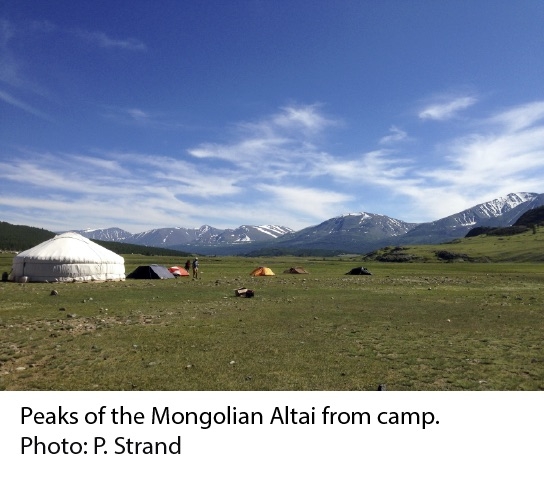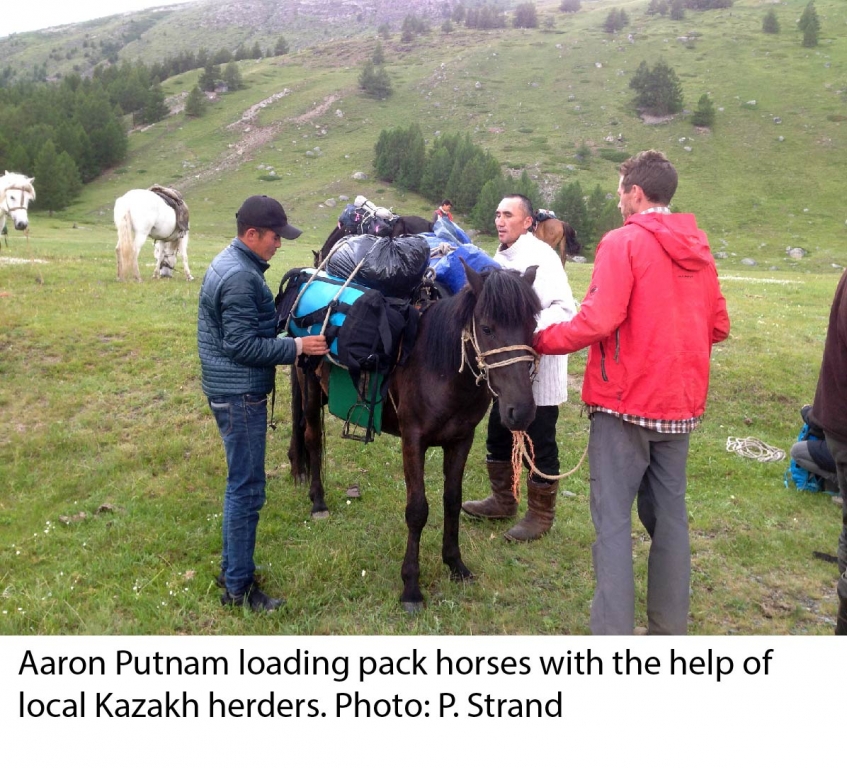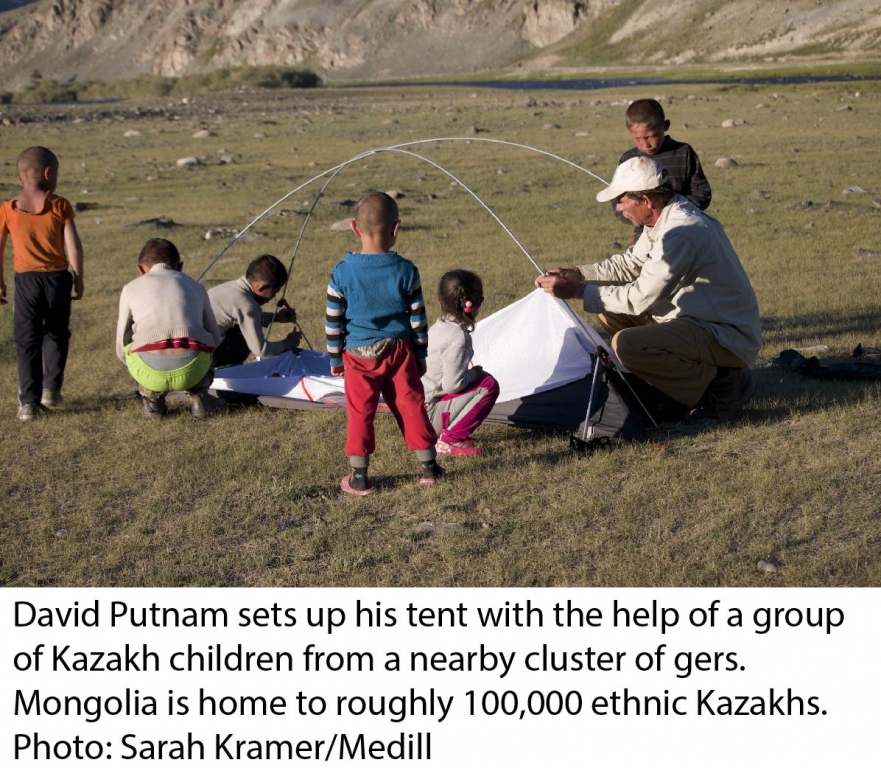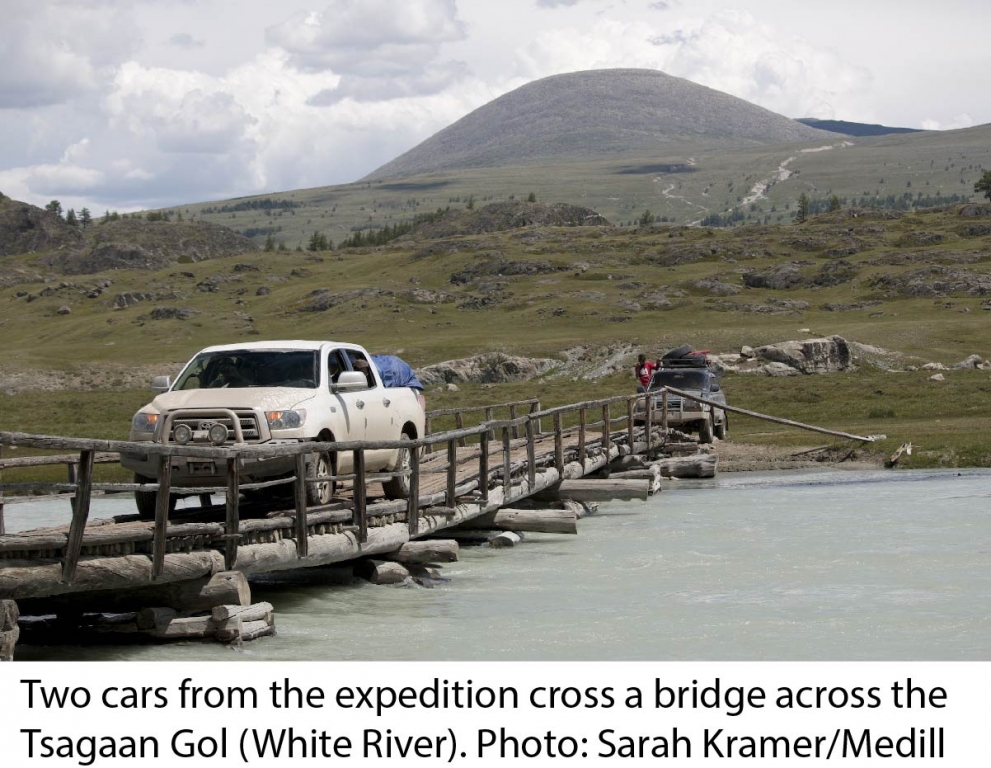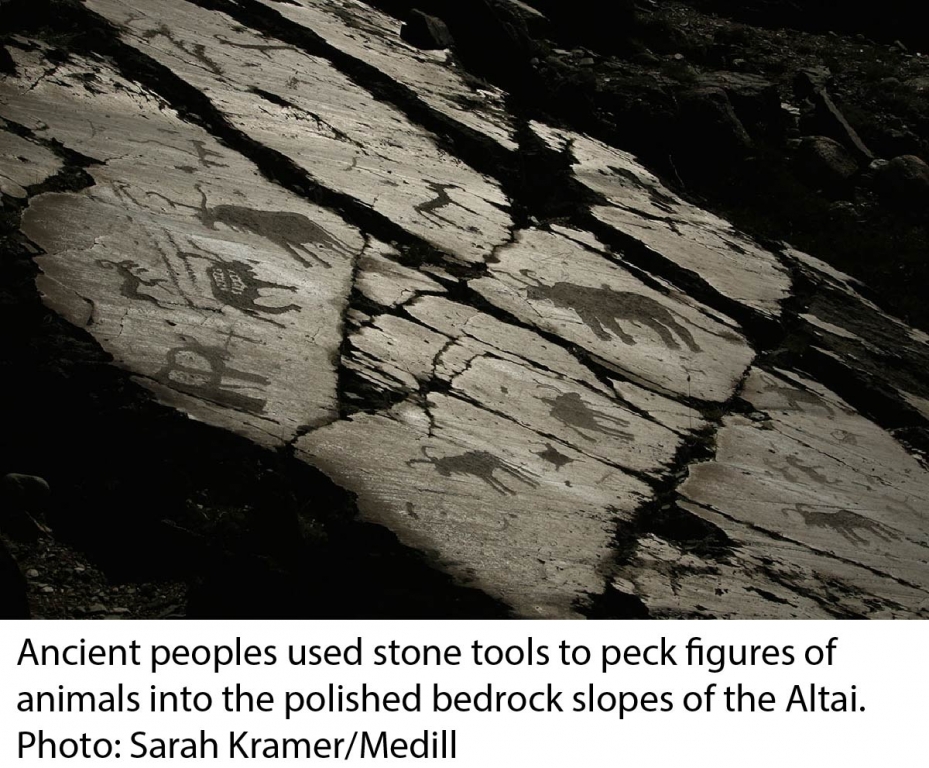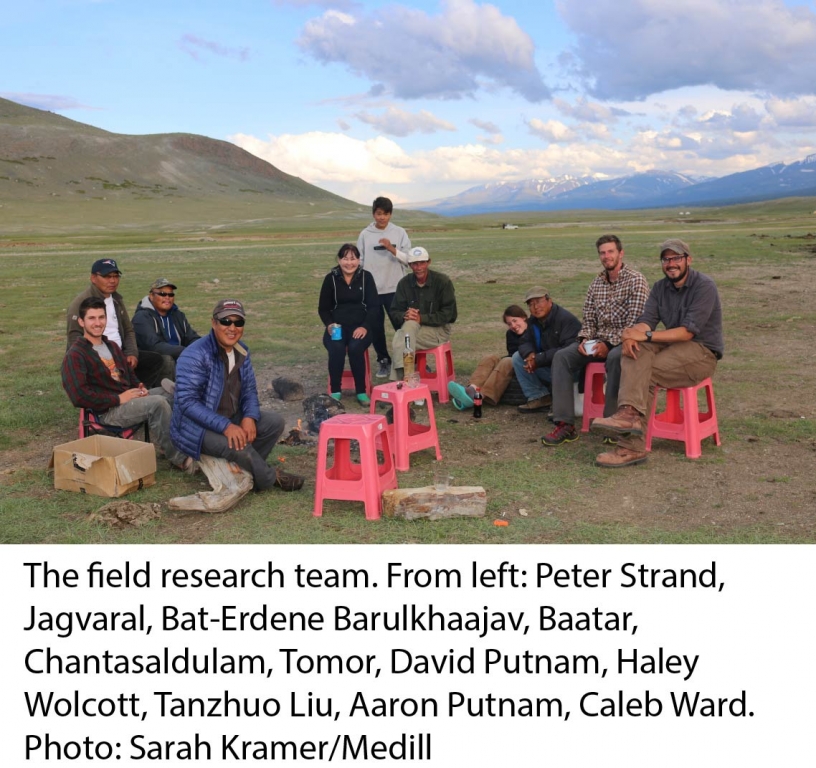A Beryllium-10 Chronology of the Last Glacial Termination in the Mongolian Altai
A Beryllium-10 Chronology of the Last Glacial Termination in the Mongolian Altai
Mongolian Altai, Mongolia
June 15 – July 25, 2015
Field team members:
Dr. Aaron Putnam (University of Maine and Lamont-Doherty Earth Observatory)
Peter Strand (University of Maine)
Dr. David Putnam (University of Maine Presque Isle)
Caleb Ward (University of Maine Presque Isle)
Sarah Kramer (Medill School of Journalism)
Pagamsuren Amarsaikhan (Mongolian University of Science and Technology)
Tsetsenbileg Bavuu (Mongolian University of Science and Technology)
Tanzhuo Liu (Lamont-Doherty Earth Observatory)
Hayley Walcott (University of Saint Andrews)
Funding support: Comer Science and Education Foundation
Research Motivation:
The primary purpose of our expedition to Mongolia is to develop a 10Be surface-exposure chronology of glacial landforms corresponding to the end of the last ice age in the Mongolian Altai, at the heart of the Asian continent. Our fieldwork focused on the mapping and sample collection of moraines and glacial geomorphologic features around Khoton Nuur. Khoton Lake lies at the foot of the Altai Mountains near the Chinese border, at an elevation of about 2,000 meters (6,600 ft) above sea level. The collected samples will be processed at the University of Maine, and we will create a chronology documenting the reduction of glacier volume since the peak of the last ice age. The Altai Mountains lie at ~48°N latitude, and will therefore add a northern complement to our efforts undertaken in Southern Hemisphere mid-latitudes, e.g., New Zealand and Patagonia. The results will provide a test of recent hypotheses for glacial terminations.
The last glacial termination represents the last great global warming and the last time CO2rose by a substantial amount before the industrial period. And yet the role of CO2 in causing the last great global warming is not certain. A solution to this problem could help us to hone our understanding of the sensitivity of atmospheric temperature to CO2, as well as to inform our understanding of the processes that launch the earth out of an ice age. This research will also allow us to evaluate the relative roles of atmospheric CO2, insolation forcing, and tropical Pacific sea-surface temperatures in driving Northern Hemisphere warming to completion during the last deglaciation.
Field Work:
We began our field season by camping up-valley of Hoton Nuur, near the Tungalag Gol (Crystal River). This campsite provided a centralized location for all field activities. We were able to rent a Kazakh ger from a local family, which served as our cooking and dining tent. Our wonderful camp cook, Chackie, did all the cooking along with her assistant Tomoroo. Chackie’s warm meals are a great treat after a long day of fieldwork. Aaron, Caleb, Sarah, Pagma, Tsetsee, Tomoroo and Peter were able to travel with local horses farther up the valley to the edge of the modern glacier. This trip was difficult, nevertheless, the team toughed it out and collected a suite of samples high up (~9,800 feet) in a glacial cirque valley. These samples will allow us to determine when the glacier’s snowline rose to pre-industrial values. We then moved down valley to the shores of Hoton Nuur. Our camp was situated between two large, glacially molded bedrock knobs, which provided the backdrop to many beautiful sunsets and sunrises.
We mapped and sampled large erratic boulders that pepper the landscape and provide perfect targets for our sampling efforts. Once processed in the laboratory at the University of Maine, the deposition dates from these boulders will document when the Hoton Nuur glacier receded from the valley at the end of the last Ice Age. These data will further our understanding of the processes that launched the earth out of an ice age, and may even help to determine the sensitivity of atmospheric temperature to CO2 change. Caleb became a master of the ancient wedge-and-shim rock splitting technique used for rock sampling. Pagma and Tsetsee learned our sampling method in a heartbeat and became indispensible members. Even Tomoroo has learned the sampling ropes. The sampling effort continued at Hoton Nuur, where we are focusing on mapping and dating large moraine ridges that impound the lake.
Tanzhuo Liu (“TL”), is an expert in the study of rock varnish. TL will use desert varnish to document periods of changing aridity since the last Ice Age. Richard Kortum, an archeologist and art historian from East Tennessee State University, paid our camp a visit and described for us the most important pieces of rock art in the valley. Richard and TL have been working together with the hopes of dating more precisely the rock art peckings of Iron Age, Bronze Age, Neolithic, and possibly even paleolithic peoples in Mongolia.
Thank you
We would like to thank everyone at Huvsgol Travel for their help with logistics and permits, without which the trip would not have been possible. Thanks also to our wonderful Mongolian guides, Boldoo, Baagee, Suure, Chackie, and Tomoroo for helping with every aspect of the trip throughout the entire expedition. Thanks to Professor Oyungerel Sambuuand M.U.S.T. for helping with permits and shipping. Thank you to University of Maine, Lamont-Doherty Earth Observatory, University of Maine Presque Isle, and Medill School of Journalism for their support. Thank you to the Comer Science and Education Foundationfor their generous financial support. Thank you to all Mongolian and Kazakhs individuals and families who helped us throughout the trip and showed us tremendous hospitality.


